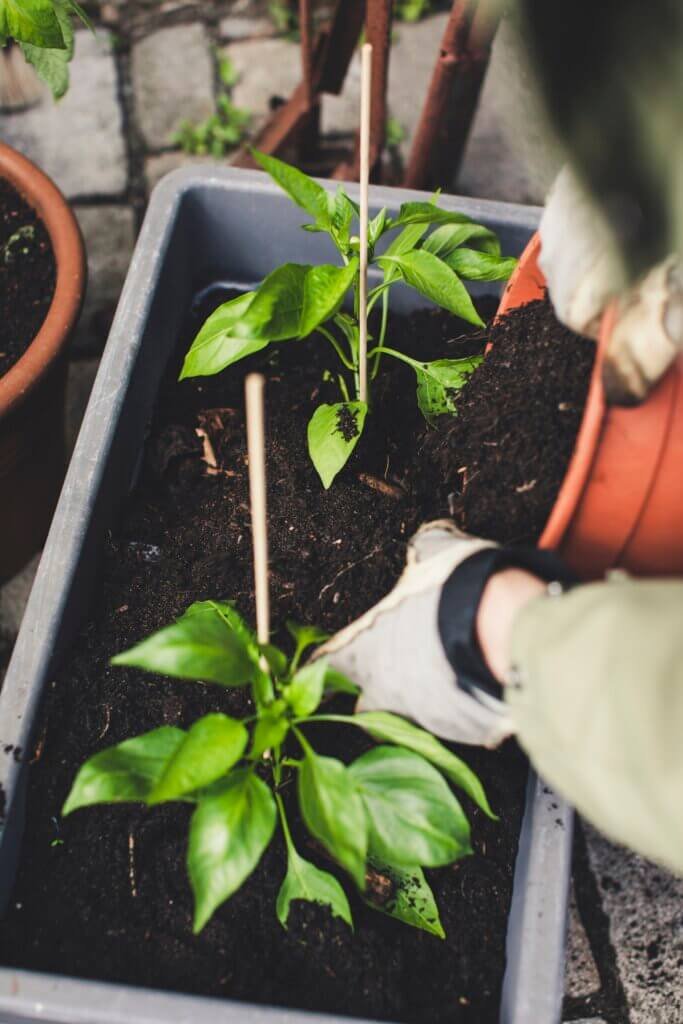Are you interested in creating a sustainable raised bed garden? Look no further! In this article, you will discover the step-by-step process of building your own raised bed garden using environmentally friendly techniques. From choosing the right location to selecting sustainable materials, you will learn everything you need to know to cultivate a thriving and eco-friendly garden. Get ready to embark on a journey of sustainable gardening bliss!
Choosing the Right Location for Your Raised Bed Garden
Considering Sunlight and Shade
When choosing the location for your raised bed garden, one of the most important factors to consider is the amount of sunlight and shade the area receives. Most vegetables and herbs thrive in full sunlight, so it is crucial to select a spot that gets at least six hours of direct sunlight per day. Observing the area throughout the day and noting the amount of sunlight it receives will help you determine the sunniest spot in your garden.
Checking for Good Drainage
In addition to sunlight, good drainage is essential for the success of your raised bed garden. You want to avoid areas with poor drainage that can lead to waterlogged soil, which can be detrimental to plant growth. To check for good drainage, observe the area during or after a heavy rainstorm. If the water drains away within a few hours, it is a sign of good drainage. However, if you notice puddles or standing water for an extended period, it is best to choose a different location or make necessary improvements to facilitate better drainage.
Avoiding Sloped or Compacted Areas
It is also important to avoid sloped or compacted areas when selecting the location for your raised bed garden. Sloped areas can cause water runoff, leading to erosion or uneven watering. Compacted soil can hinder root growth and prevent proper circulation of air and water. Choose a flat area in your garden that is free from compacted soil or consider options such as building a terraced garden, which can help mitigate the challenges posed by sloped areas.
Selecting the Right Materials for Your Raised Bed Garden
Choosing Sustainable Wood
When it comes to material selection for your raised bed garden, opting for sustainable wood is an eco-friendly choice. Cedar and redwood are popular choices for raised beds due to their natural resistance to rot and pests. These types of wood are derived from sustainably managed forests, making them a sustainable option for building your raised bed garden.
Using Recycled Materials
Another environmentally conscious choice is using recycled materials for your raised bed garden. For the frame of your bed, you can repurpose old wooden pallets, bricks, or even concrete blocks. Not only does this reduce waste and save money, but it also adds a unique and rustic charm to your garden.
Considering Alternative Materials
If you prefer to avoid wood altogether or are looking for alternative materials, there are many options available. Metal troughs or galvanized steel can provide a modern and durable alternative. Additionally, plastic and composite materials made from recycled plastic and wood fibers are becoming increasingly popular for raised bed construction. Consider your preferences, budget, and the lifespan you desire for your raised bed garden when selecting alternative materials.

Preparing the Ground for Your Raised Bed Garden
Removing Grass and Weeds
Before constructing your raised bed garden, it is crucial to remove any existing grass and weeds from the area. Start by mowing the grass as low as possible and then manually remove the remaining vegetation. You can use a flat-edged shovel or a garden hoe to dig out the grass and weeds. By clearing the area thoroughly, you will prevent them from resurfacing and competing with your plants for nutrients and space.
Improving Soil Quality
To create an optimal growing environment for your plants, it is important to improve the soil quality in the area where your raised bed will be placed. Begin by loosening the soil with a garden fork or tiller to ensure proper aeration. You can also mix in organic matter, such as compost or well-rotted manure, to provide essential nutrients and enhance the soil structure. This step will help promote healthy root growth and overall plant vitality.
Amending the Soil with Organic Matter
In addition to improving the soil quality, it is beneficial to amend the soil in your raised bed garden with organic matter. This can include various types of compost, such as kitchen scraps, leaves, or grass clippings. The organic matter will enrich the soil, increase its water-holding capacity, and encourage beneficial microbial activity. Regularly adding organic matter to your raised bed garden will continually replenish nutrients and improve the overall health of your plants.
Constructing the Raised Bed Garden
Determining the Size and Shape
Before constructing your raised bed garden, consider the size and shape that best fits your gardening needs and the available space in your garden. A typical width for a raised bed is about 4 feet, as it allows for easy reach from both sides without needing to step into the bed. The length can vary depending on your preferences and space availability. Rectangular beds are popular, but you can also experiment with other shapes, such as square or L-shaped beds, depending on your garden layout.
Assembling the Bed Frame
Once you have determined the size and shape, it is time to assemble the bed frame of your raised bed garden. Start by laying out the boards or materials you have chosen for the sides of the bed. Use screws or nails to secure the corners, ensuring the frame is sturdy and level. If using recycled materials or alternative options, follow the manufacturer’s instructions for assembly. Take your time during this step, as a well-constructed frame will provide a strong foundation for your raised bed garden.
Securing the Corners
To ensure the stability of your raised bed garden, it is important to secure the corners of the bed frame. This can be done by adding corner braces or brackets to reinforce the structure. Alternatively, you can drive stakes into the ground at each corner and attach them to the frame with screws or nails. These corner reinforcements will prevent the bed from shifting or bowing over time, especially as the soil settles and the weight of the plants increases.

Planning and Planting in Your Raised Bed Garden
Choosing the Right Plants
When planning your raised bed garden, it is essential to choose the right plants for your specific growing conditions and preferences. Consider factors such as the amount of sunlight your garden receives, the climate in your area, and the space available in your raised bed. Research the growing requirements of different plants and select varieties that are well-suited to the conditions in your garden. Remember to consider the desired harvest time, as well as any companion planting or crop rotation strategies you intend to implement.
Creating a Planting Layout
To make the most efficient use of space in your raised bed garden, it is beneficial to create a planting layout. Sketch out the dimensions of your raised bed and plan where each plant will be positioned. Consider factors such as plant height, spread, and their compatibility with neighboring plants. By planning in advance, you can maximize yields, minimize competition, and ensure proper air circulation and access to sunlight for each plant.
Companion Planting and Crop Rotation
Incorporating companion planting and crop rotation techniques in your raised bed garden can greatly benefit plant health and productivity. Companion planting involves strategically planting compatible plants together, taking advantage of their mutually beneficial relationships. For example, planting marigolds alongside tomatoes can help deter pests and improve tomato growth. Crop rotation involves changing the placement of crops each growing season to minimize soil-borne diseases and nutrient depletion. By rotating crops, you reduce the risk of pests and diseases building up in the soil and ensure the overall health of your raised bed garden.
Watering and Irrigation in Your Raised Bed Garden
Installing a Drip Irrigation System
To ensure proper hydration for your plants in the raised bed garden, installing a drip irrigation system is an efficient and water-saving method. Drip irrigation delivers water directly to the base of plants, minimizing water waste through evaporation or runoff. This method also helps prevent the spread of diseases since the foliage remains dry. By installing a drip irrigation system, you can provide consistent moisture to your plants while minimizing the time and effort required for manual watering.
Using Water-Efficient Techniques
In addition to a drip irrigation system, there are several water-efficient techniques you can employ in your raised bed garden. Applying mulch around plants helps retain soil moisture by reducing evaporation. Watering your garden in the early morning or late afternoon prevents excessive evaporation due to heat. Using moisture-retaining soil additives, such as vermiculite or perlite, can also improve water retention. These techniques will help you conserve water and create a sustainable watering routine for your raised bed garden.

Mulching and Weed Control in Your Raised Bed Garden
Applying Organic Mulch
Mulching is an essential practice to control weeds, conserve moisture, and improve soil health in your raised bed garden. Applying organic mulch, such as straw, wood chips, or shredded leaves, creates a protective layer on top of the soil, preventing weed growth and reducing water evaporation. Additionally, organic mulch breaks down over time, enriching the soil with organic matter and improving its structure. Apply a layer of mulch around your plants, leaving a small gap around the base to prevent moisture-related issues, such as rot or pests.
Using Weed Barriers or Landscape Fabric
For an additional layer of weed control, you can use weed barriers or landscape fabric in your raised bed garden. These materials create a physical barrier between the soil and weed seeds, preventing them from germinating and growing. Weed barriers or landscape fabric should be installed before planting your crops to ensure proper coverage. Remember to make holes or slits in the fabric where you plan to place your plants, allowing for proper root growth while still discouraging weed growth.
Natural Pest Control in Your Raised Bed Garden
Encouraging Beneficial Insects
To naturally control pests in your raised bed garden, it is beneficial to encourage beneficial insects. Ladybugs, lacewings, and parasitic wasps are examples of insects that prey on common garden pests. One way to attract beneficial insects is by planting a diverse range of flowering plants throughout your garden. These plants provide nectar and pollen, attracting beneficial insects to your raised bed garden. Additionally, providing shelter, such as small piles of rocks or a bug hotel, can create a welcoming environment for these beneficial creatures.
Implementing Companion Planting for Pest Control
Companion planting not only benefits plant growth but also helps in pest control. Certain plants have natural pest-repellent properties or attract beneficial insects that prey on pests. For example, planting basil near tomatoes can help deter tomato hornworms, while planting marigolds near beans can repel bean beetles. By strategically interplanting pest-repellent plants with your vegetable crops, you can naturally reduce pest populations and maintain a healthy balance in your raised bed garden.

Fertilizing and Composting in Your Raised Bed Garden
Using Organic Fertilizers
To provide essential nutrients to your plants in a sustainable manner, it is advisable to use organic fertilizers in your raised bed garden. Organic fertilizers, such as compost, fish emulsion, or bone meal, are derived from natural sources and help replenish nutrients in the soil. They release nutrients slowly, providing a steady supply over time without causing nutrient imbalances or leaching. By using organic fertilizers, you can ensure the long-term health and productivity of your raised bed garden while minimizing environmental impact.
Implementing Vermicomposting or Compost Bins
Composting is an excellent way to recycle kitchen and garden waste while enriching the soil in your raised bed garden. Vermicomposting, which involves using worms to break down organic matter, is an efficient method for small-scale composting. By setting up a worm bin, you can create nutrient-rich vermicompost that can be added to your raised bed garden. Alternatively, traditional compost bins or compost piles can be used to decompose organic matter, creating compost that can be incorporated into the soil or used as a top dressing for your plants.
Maintaining and Caring for Your Raised Bed Garden
Regularly Monitoring and Inspecting Your Plants
Maintaining a thriving raised bed garden requires regular monitoring and inspection of your plants. Take the time to observe your plants closely, checking for any signs of pests, diseases, or nutrient deficiencies. Early detection allows for prompt intervention and increases the chances of successful treatment. Additionally, monitor soil moisture levels and adjust watering if necessary. Regularly inspecting your plants will help you identify and address any issues before they become more severe.
Dealing with Diseases and Pests
If you encounter pests or diseases in your raised bed garden, it is important to address them promptly and effectively. Implement organic pest control methods, such as handpicking pests, using insecticidal soaps, or introducing beneficial insects. For diseases, ensure proper sanitation practices, such as removing infected plants or plant debris and promoting good air circulation. Disease-resistant plant varieties can also help minimize the risk of infections. By addressing pest and disease issues in a timely manner, you can prevent further damage and maintain the health of your raised bed garden.
Pruning and Harvesting
To keep your raised bed garden in optimal condition, regular pruning and harvesting are necessary. Pruning involves selectively removing parts of the plant, such as dead or diseased branches, to promote better airflow and encourage healthy growth. Harvesting crops at the right time is crucial to ensure peak flavor and productivity. Follow the recommended guidelines for each plant, considering factors such as size, color, and taste. Pruning and harvesting on a regular basis will help maintain the overall structure, vitality, and productivity of your raised bed garden.
By following these comprehensive steps, you can successfully build and maintain a raised bed garden sustainably. From choosing the right location and materials to planning, planting, and caring for your garden, each step contributes to creating an environmentally friendly and productive space. Enjoy the process of growing your own food and creating a sustainable oasis in the comfort of your own backyard. Happy gardening!



